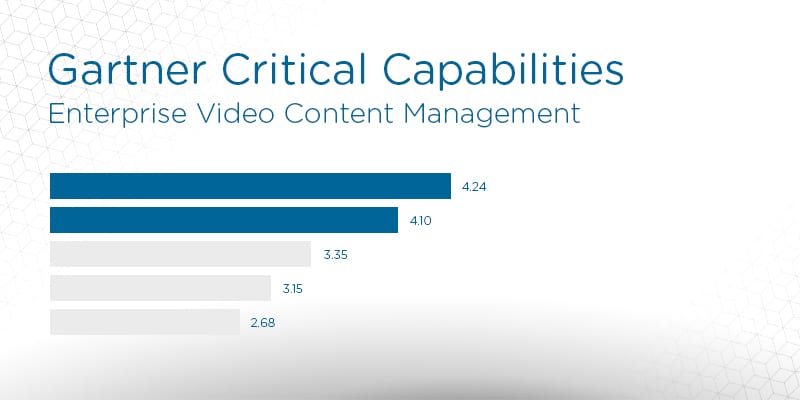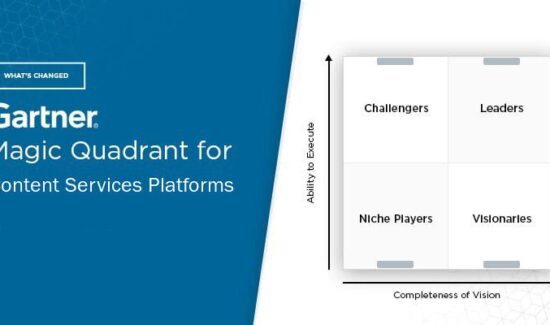2019 Gartner Critical Capabilities for Enterprise Video Content Management: Key Takeaways

 Analyst house, Gartner Inc., recently released its 2019 Critical Capabilities for Enterprise Video Content Management, a companion resource to the popular Magic Quadrant report. Used in conjunction with the Magic Quadrant, Critical Capabilities is an additional asset which can assist buyers of Enterprise Video Content Management (EVCS) solutions in finding the products that best fit their organization.
Analyst house, Gartner Inc., recently released its 2019 Critical Capabilities for Enterprise Video Content Management, a companion resource to the popular Magic Quadrant report. Used in conjunction with the Magic Quadrant, Critical Capabilities is an additional asset which can assist buyers of Enterprise Video Content Management (EVCS) solutions in finding the products that best fit their organization.
Gartner defines Critical Capabilities as “attributes that differentiate products/services in a class in terms of their quality and performance.” Gartner rates each vendor’s product or service on a five-point (five points being best) scale in regard to how well it delivers each capability. Critical Capabilities reports include comparison graphs for each use case, along with in-depth descriptions of each solution based on the various points of comparison.
The report highlights the 13 vendors Gartner considers most significant in this space and evaluates them against 11 critical capabilities and four use cases prevalent in the space, including:
- Internal executive messaging
- Internal training
- Internal collaboration
- External video for sales and marketing
The editors at solutions review have read the report, available here, and pulled out three key takeaways.
Harder to identify differentiating capabilities
As the enterprise video content management market matures, it has become more difficult to determine the capabilities that differentiate vendor’s products from one another. However, capabilities that leverage the use of artificial intelligence, such as search, display innovation that does differentiate platforms from others. For example, search that utilizes artificial intelligence capabilities like object recognition (including face recognition) will enhance the functionality which allows the metadata attached to a video to be searched to find files that match a set of given criteria.
Software as a Service remains the top choice for deployment
While a minority of customers (one in four) choose to deploy using hybrid configurations, where application logic, encoding, and content are provisioned from a combination of Software as a Service (SaaS)/cloud and on-premise deployments, a smaller number of users (one in five) choose to deploy completely on-premises. Delivery via SaaS is an attractive option specifically for businesses that want to minimize their investment in resources and also deliver to external constituents. In addition to this, the most flexible solutions offer a SaaS-based solution, with the option to host through the provider using their own or a third-party cloud service.
Collaboration is essential
Support for collaboration, communication, and knowledge sharing has become especially important in the EVCM market. An example of this is the integration between enterprise video content management and meeting solutions in order to facilitate the capture and recall of work sessions conducted via video. Being able to deliver video on internal systems from internally managed storage and software is critical, as is the ability to integrate with internal collaboration and portal software. In addition to this, searching for past conversations and giving an analysis of ongoing collaboration is also useful.
Read Gartner’s Critical Capabilities to see how all the top providers scored.
Widget not in any sidebars























